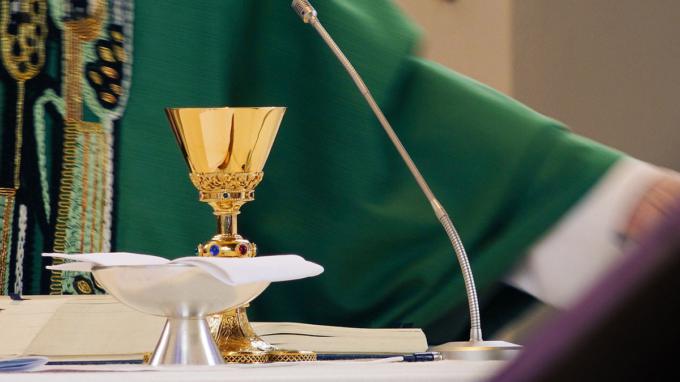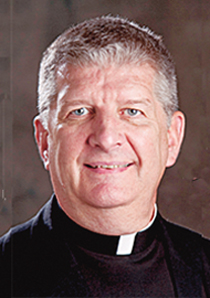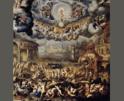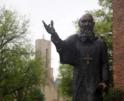
Faith
This prayer, or better, these prayers, are the center or highpoint of each Mass. Perhaps nowhere else is it so clear that the entire liturgy is the action of Christ and his church.

O’Grady
It's the longest of the prayers at any Mass. It comes in multiple forms. It is not always easy to follow or, better, to pray. It seems like only the celebrant is praying. This most important prayer of the Mass might be better appreciated by all of us with some reflection.
In the next few weeks, we'll look at this prayer and its fundamental format. Then, we will look at the individual Eucharistic Prayers in the Roman Missal. This set of eight articles will bring us up to The Pilot's annual summer hiatus, with the last one on June 28, 2024.
This prayer, or better, these prayers, are the center or highpoint of each Mass. Perhaps nowhere else is it so clear that the entire liturgy is the action of Christ and his church. So, you and the priest are really and truly Christ praying to his Father.
Since the bishop or priest is the one who gives voice to the prayer, we can think that he alone is praying. When there are multiple concelebrants at a Mass, it can seem even more like their prayer rather than ours. Yet, this prayer is the most important of our prayers.
Each of the Eucharistic Prayers (there are 13 of them in the Roman Missal) has definite sections. Each of the sections is assigned to various members of the assembly. Admittedly, most of them are assigned to the principal celebrant or concelebrants. However, each of them has at least three sections or parts that are assigned to other than the bishop or priest. In other words -- your parts. And they are parts that are preferred to be sung in so far as this is possible. Each is basically a response to something that has preceded it.
The Holy, Holy, Holy is the response to the Preface. The priest is to join in this acclamation with the rest of the assembly. The instruction for it tells us that the priest and people join in this acclamation.
The Memorial Acclamation, which has three options, is for the people. It is the people's response to the sections of the Eucharistic Prayer that precede it. The instructions here read that "the people respond." The principal celebrant and concelebrants do not make the acclamation.
At the end of the Eucharistic Prayers is the Doxology completed by the Great Amen, and again, this is preferred to be sung rather than recited if this is at all possible. The direction in the Missal is that the people respond to the Doxology with the Amen.
Apart from those parts assigned as mentioned above, it is the remainder of prayer in which we all join in praying.
Remember, prayer can be silent as well as verbal and spoken. This demands attention to the words being proclaimed and, on the part of the celebrant, attention to proclaiming the prayer clearly and loudly enough to be heard.
The ready availability of participation aids, which can be helpful and even necessary when there are language differences, can be a distraction when they provide a means to "read along" with the priest rather than the silent and attentive participation that is appropriate for these prayers. Prayer is both listening and speaking.
All the Eucharistic Prayers proclaim several fundamentals of our faith about the Eucharist:
-- The connection between the sacrifices of the Old Testament, perfected in the sacrifice of Christ for us and for our salvation.
-- The New Covenant, which Christ made by his life, death, resurrection, and ascension is made present. The mystery that is the Eucharist, a mystery that goes beyond and is extended across time and place.
-- The participation of the whole Church assembled here and now, assembled in the glory of the saints, and the assembly of those still awaiting entrance into their great company.
-- Above all, there is, of course, the change effected by the power of the Holy Spirit through the ministry of the priest by which the bread and wine become Christ sacramentally present, given again as at the Last Supper for us.
Perhaps a good way to participate more in this prayer is to ponder and pray it before Mass -- this can be a challenge since the priest can choose from among several prayers. Perhaps during the week, you can check out the prayer the priest used at Mass and pray the whole thing yourself. Read it attentively and slowly.
St. Thomas Aquinas, in the famous antiphon for the Magnificat at Evening Prayer for the Solemnity of the Most Holy Body and Blood of Christ (Corpus Christi), proposed a summary of the Eucharistic Prayer: Often called the "O sacrum convivium" you may have heard it prayed or sung as a motet. Here is an English version:
"O how sacred a banquet is this,
in which Christ is himself consumed,
the memory of his passion is celebrated,
the soul is filled with grace,
and the pledge of future glory is given us."
Recent articles in the Faith & Family section
-
Speak, Lord!Archbishop Richard G. Henning
-
Heads upScott Hahn
-
America, In the Power of the Spirit, Witnesses to ChristMaureen Crowley Heil
-
Liturgical music for funeral liturgiesRichard J. Clark
-
Scripture Reflection for Dec. 1, 2024, First Sunday in AdventFather Joshua J. Whitfield


















